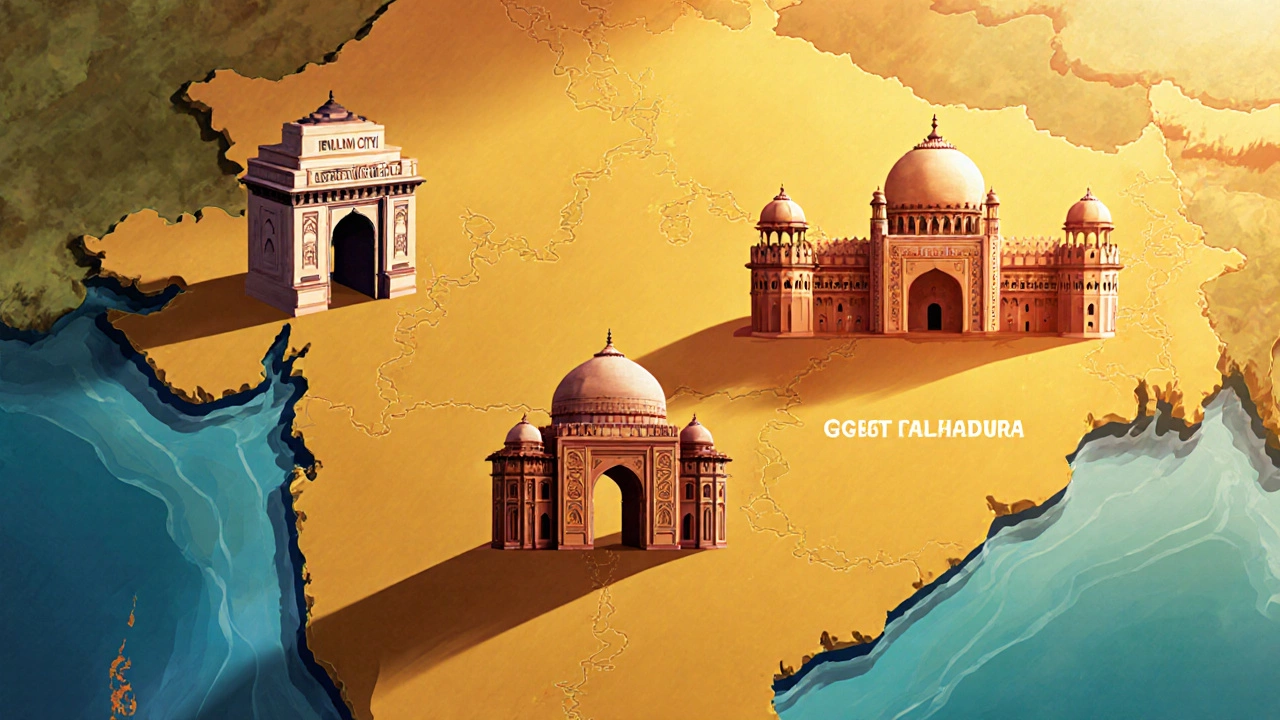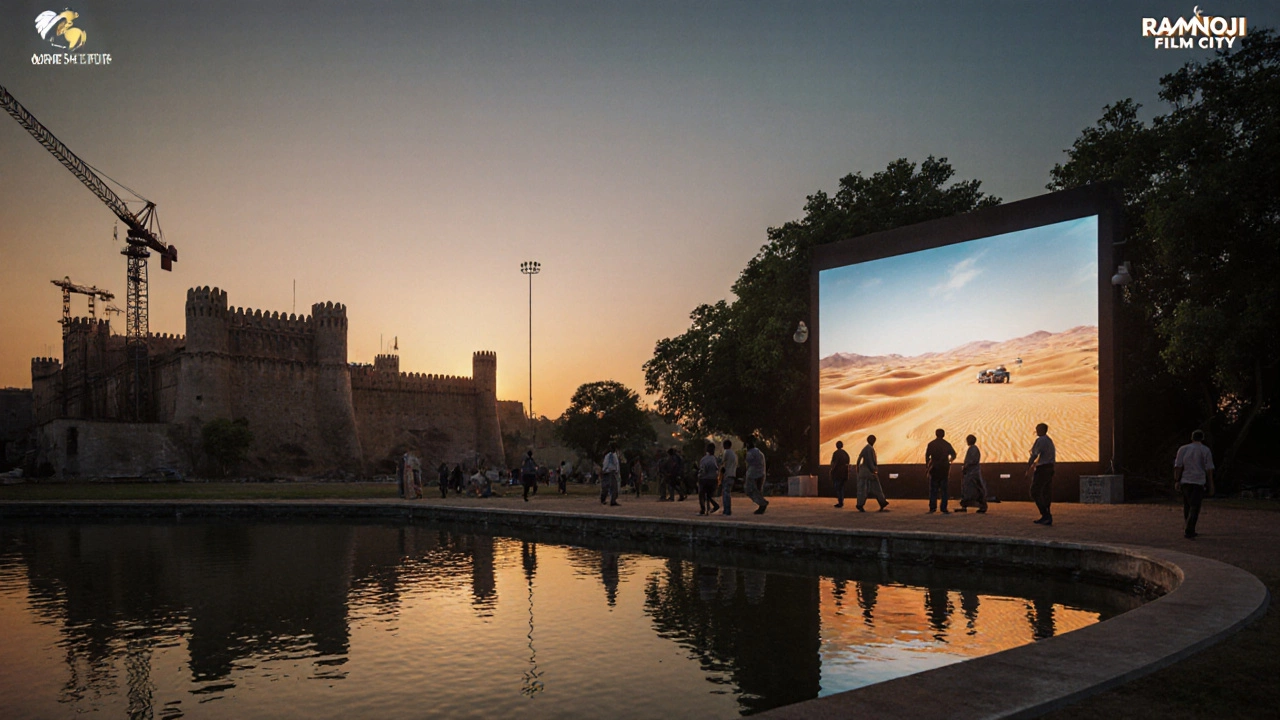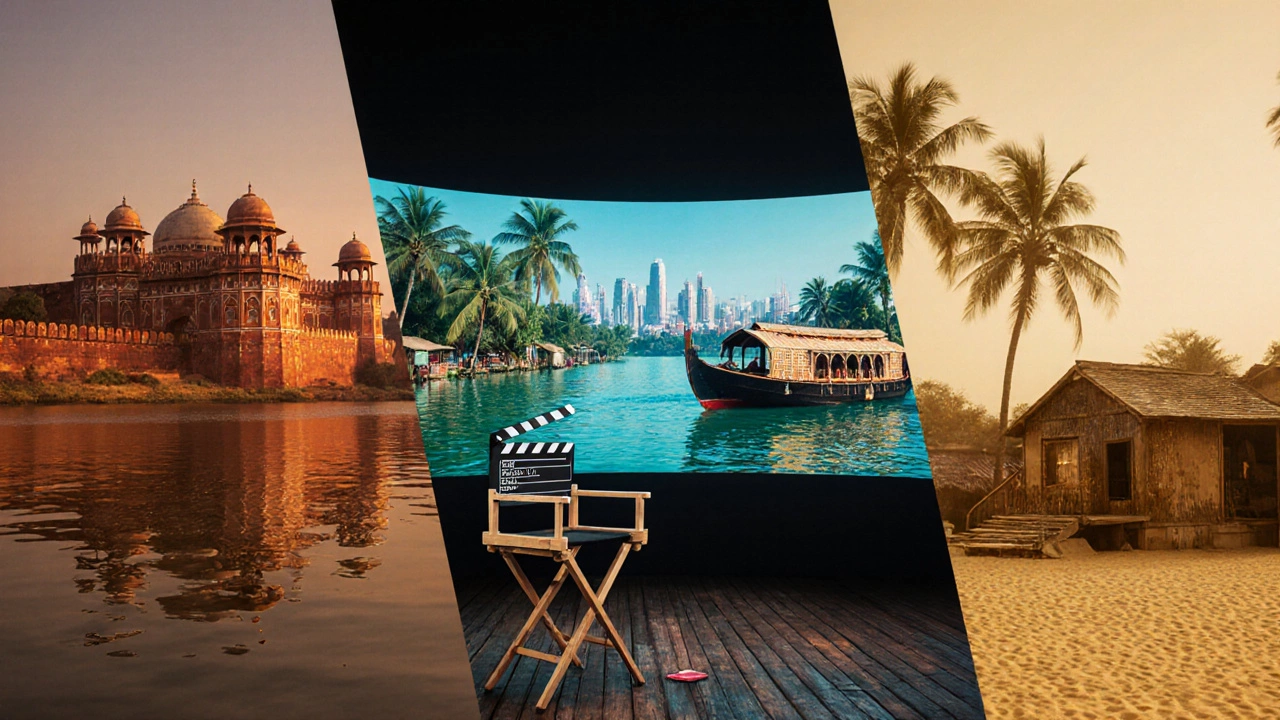Top Film Shooting Locations in India - Where Most Movies Are Filmed
 Oct, 24 2025
Oct, 24 2025
Film Location Budget Calculator
Calculate Location Savings
Savings Analysis
Key Takeaways
- More than 60% of Indian films are shot in just three states: Maharashtra, Telangana and Rajasthan.
- Ramoji Film City (Telangana) is the world’s largest integrated film‑studio complex.
- Film City Mumbai and the surrounding suburbs host the majority of Bollywood productions.
- Scenic locales like Jaipur, Goa and Kerala attract regional cinema for their natural backdrops.
- State incentives, skilled crews and infrastructure drive location choices.
Ever wondered why you see the same lush backwaters, grand forts or bustling streets in countless Indian movies? The answer lies in a handful of hot‑spot locations that combine affordable costs, versatile scenery and top‑notch facilities. This guide breaks down where most movies are actually filmed, which studios dominate the market, and what makes those places irresistible to directors.
India film shooting locations refer to the geographic spots across the subcontinent that host the production of Bollywood, regional and independent movies. These locations range from purpose‑built studios to natural landmarks that have become cinematic icons. Understanding the geography helps producers plan budgets, locate talent, and capture the visual mood audiences love.
Geographic Breakdown: Which States Lead the Pack?
Data from the Film Producers’ Association (2024) shows that roughly 65% of all feature‑film shoots occur in just three states. Below is a snapshot of the top contributors:
| State | Key Studio / Spot | Notable Films | Share of Total Shoots |
|---|---|---|---|
| Maharashtra | Film City Mumbai | "Dangal", "Yeh Jawaani Hai Deewani" | 38% |
| Telangana | Ramoji Film City | "Baahubali", "RRR" | 22% |
| Rajasthan | Jaipur & Jodhpur | "Jodhaa Akbar", "Padmaavat" | 12% |
| Kerala | Backwaters, Munnar | "Kumbalangi Nights", "Charlie" | 9% |
| Goa | Beaches & Old Portuguese Quarter | "Dil Chahta Hai", "Holiday" | 6% |
These five states alone account for more than 80% of all movie shoots, making them the go‑to destinations for producers seeking efficiency and visual variety.
Major Studios That Power Indian Cinema
While natural sites provide ambience, purpose‑built studios deliver controlled environments, sound‑stages, and post‑production facilities. The most influential complexes are:
- Film City Mumbai is a sprawling 520‑acre studio located in the suburb of Goregaon. It houses over 30 sound stages, outdoor sets replicating European streets, and a dedicated post‑production hub.
- Ramoji Film City spans 1,666 acres near Hyderabad, making it the world’s largest integrated studio. It offers indoor/outdoor sets, a massive water‑tank, and even a theme‑park for on‑set recreation.
- Sanjay Gandhi National Park in Delhi NCR provides dense forest backdrops that have featured in period dramas and thrillers alike.
- Jaipur Film City (also known as Nahargarh Studios) offers authentic Rajasthani palace sets, perfect for historical epics.
- Kerala Film Development Corporation (KFDC) Studios specialize in water‑based shoots, leveraging the backwaters for high‑budget romantic sequences.
These facilities together handle roughly 70% of all studio‑based work, from pre‑production rehearsals to VFX‑heavy post‑production.

Why Filmmakers Flock to These Locations
Three practical reasons dominate the decision‑making process:
- Cost efficiency. Maharashtra and Telangana offer subsidized land rates and tax rebates that can shave up to 15% off a film’s budget.
- Infrastructure & talent pool. Mumbai’s concentration of experienced crew-cinematographers, set designers, and post‑production artists-means projects can be staffed quickly.
- Visual diversity. From the sand dunes of Rajasthan to the emerald backwaters of Kerala, a single state can provide multiple distinct looks, reducing the need for long‑distance travel.
Additionally, state governments now run dedicated “Film Facilitation Cells” that streamline permits, police coordination, and local accommodations.
Iconic Movies and the Spots That Made Them Famous
Seeing a famous scene and recognizing the location is part of movie magic. Here are a few standout examples:
- Jaipur provided the majestic Amber Fort backdrop for "Jodhaa Akbar" and the grand palace interiors in "Padmaavat".
- Goa beachside shacks were the setting for the carefree road‑trip sequences in "Dil Chahta Hai".
- Kerala Backwaters turned into a dreamy romance canvas for "Charlie" and the intense emotional beats of "Kumbalangi Nights".
- Ramoji Film City housed the massive battlefields and CGI‑heavy sequences of "Baahubali" and "RRR".
- Film City Mumbai was transformed into a bustling New York street for "Yeh Jawaani Hai Deewani" and served as the cricket stadium in "MS Dhoni: The Untold Story".
These examples illustrate how a well‑chosen location becomes a character in its own right.
How to Secure a Shooting Permit - A Practical Checklist
Getting the green light isn’t as mysterious as it sounds. Follow these steps:
- Identify the governing body (e.g., Maharashtra Film, Stage & Tiny Technical Services Department for Mumbai).
- Submit a location application 30-45 days in advance, including script excerpts, crew list, and insurance proof.
- Pay the location fee, which varies from ₹5,000 for a public park to ₹2 lakh for historic forts.
- Obtain a police clearance certificate if you plan large crowds or stunts.
- Coordinate with the local Film Facilitation Cell for traffic management, electricity, and waste disposal.
Most states now offer an online portal that tracks application status in real time, cutting down on paperwork.

Emerging Trends: The Future of Indian Filming Locations
While traditional hubs remain dominant, new forces are reshaping the map:
- Virtual Production. Studios in Bengaluru are investing in LED‑wall stages that mimic outdoor environments, reducing the need to travel.
- Eco‑friendly shooting. Kerala’s government introduced a green‑filming policy in 2023, offering subsidies for productions that use renewable energy on set.
- Regional incentives. The state of Gujarat announced a 12% cash rebate for movies filmed in its desert corridors, aiming to attract more period pieces.
Keeping an eye on these developments helps producers stay ahead of cost curves and sustainability goals.
Quick Reference: What Each Top Location Offers
| Location | Key Benefits | Typical Genres |
|---|---|---|
| Maharashtra (Film City Mumbai) | Large sound stages, skilled crew, tax rebate | Bollywood commercial, action, romance |
| Telangana (Ramoji Film City) | Vast outdoor sets, water tank, VFX infrastructure | Epic, fantasy, large‑scale drama |
| Rajasthan (Jaipur) | Heritage forts, desert landscapes | Historical, period, adventure |
| Kerala (Backwaters) | Scenic water bodies, lush greenery | Romance, indie, drama |
| Goa | Beachfronts, colonial architecture | Come‑back, teen, musical |
Frequently Asked Questions
Which Indian state has the highest number of film shoots?
Maharashtra, thanks to Film City Mumbai and a massive pool of industry talent, accounts for about 38% of all film shoots in India.
Is Ramoji Film City the biggest studio in the world?
Yes. Spanning 1,666 acres, it holds the Guinness World Record for the largest integrated film‑studio complex.
Do I need a special permit to film in public places like Jaipur forts?
Yes. The Archaeological Survey of India (ASI) issues permits for heritage sites, and fees range from ₹10,000 to ₹1 lakh depending on the area and duration.
Are there tax incentives for shooting in Kerala?
Kerala offers a 10% rebate on equipment rental and a 5% cash rebate on total production spend for projects that hire local crew.
How has virtual production changed location choices?
LED‑wall stages let filmmakers recreate foreign locales indoors, cutting travel costs and simplifying logistics, especially for high‑budget VFX‑heavy films.
From the bustling lanes of Mumbai to the deserts of Rajasthan, India’s filming hotspots offer a blend of affordability, talent, and breathtaking scenery. Knowing where the action happens lets you plan smarter, spend less, and capture the visual magic that makes Indian cinema so captivating.